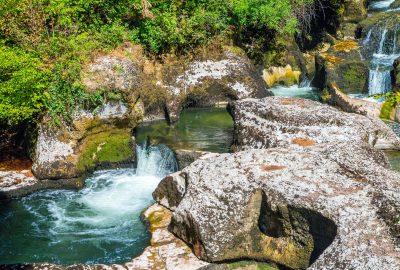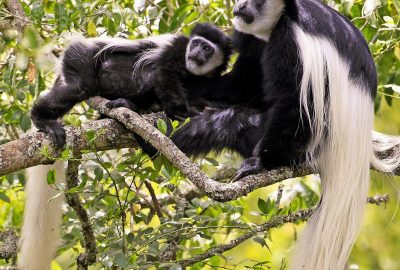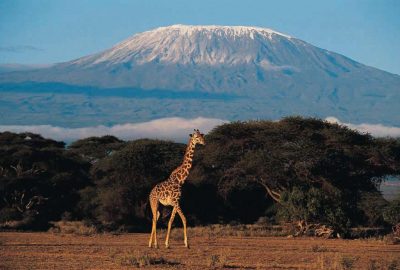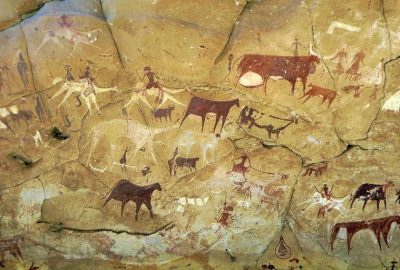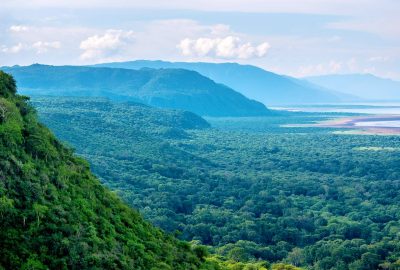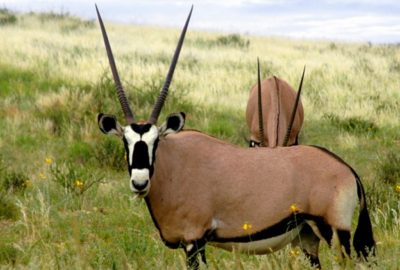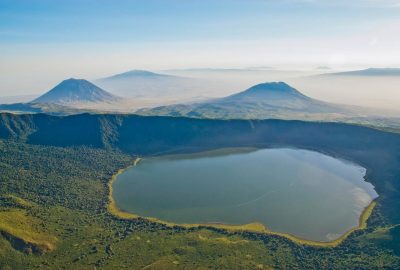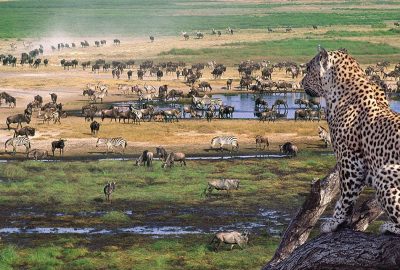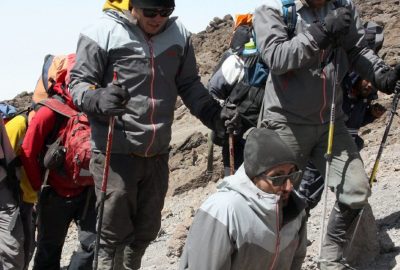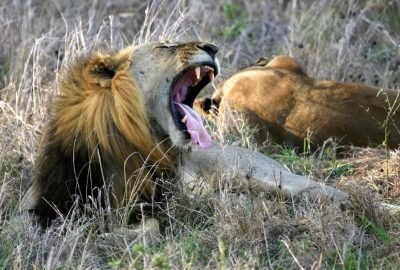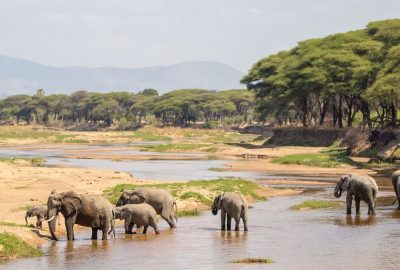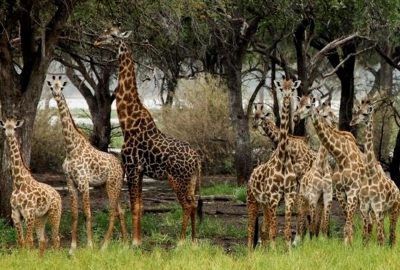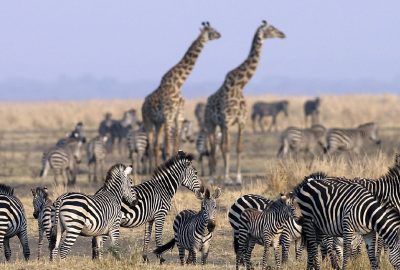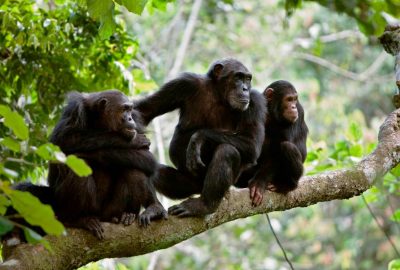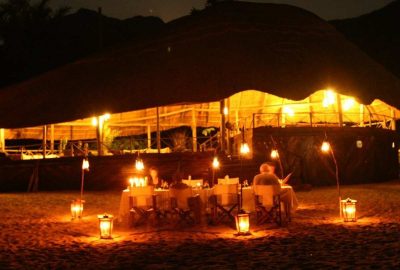Kitulo is indeed a rare botanical marvel, home to a full 350 species of vascular plants, including 45 varieties of terrestrial orchids, which erupt into a riotous wildflower display of breathtaking scale and diversity during the main rainy season of late November to April.
One of Tanzania’s most beautiful wilderness areas, the Udzungwa Mountains National Park, is a high forest area and a haven for hikers. This 1,990 sq km park was formed in 1992 by combining several forest reserves. The mountains are a part of the Eastern African Arc, a chain of ancient mountains which run from the Taita Hills in Kenya through the Pare and Usambara
Amani Nature Reserve (ANR) was established in May 1997. It covers an area of about 8,380 hectares of pristine forest including some 1,065 hectares of forest from Usambara Tea Company, managed as part of the reserve.
Furthermore ANR has a high degree of endemic flora and fauna, and the area is a true representative of the tropical Montana
This national park lies about 45km east of Arusha town. It is therefore the closest national park to the safari capital of Tanzania. This park is home to Mt Meru, Tanzania’s “other mountain” standing at 4565m, Ngurdoto Crater and the Momella Lakes. Despite its relatively small size, this park has a lot to offer such as Colobus monkeys, flamingos, elephants, giraffes,
Kilimanjaro. The name itself is a mystery wreathed in clouds. It might mean Mountain of Light, Mountain of Greatness or Mountain of Caravans. Or it might not. The local people, the Wachagga, don’t even have a name for the whole massif, only Kipoo (now known as Kibo) for the familiar snowy peak that stands imperious, overseer of the continent, the summit of Africa.
Get a chance to stay and interact with the local people explore their lifestyles. Take a walk around Kolo village. This tour will take you to traditional Irangi’s homes with traditional houses. Visit Chief Kimolo, a great and long respected leader during German colonial rule. Get to know the history of Irangi traditional leadership and their culture from a story teller of the chief family.
Manyara National park is famous in Tanzania for many reasons, including the lions that climb the trees there. The park attracts a lot of visitors due to it being the natural habitat of many different species of beautiful bird, who spend their days searching the lake for food. In total there are over 400 species of bird living in the park.
Mkomazi is vital refuge for two highly endangered species, the charismatic black rhino and sociable African wild dog, both of which were successfully reintroduced in the 1990s. Nomadic by nature, wild dog might be seen almost anywhere in the park, but black rhino are restricted to a fenced sanctuary, ensuring their safe keeping for future generations enjoyment and prosperity.
The crater is home to many species of wild game and birds. With the exception of impala and topi (due to fierce competition with the wildebeest) and the giraffe (because there is not much to eat at tree level), almost every species of African plains mammal lives in the crater, including the endangered black rhino, and the densest population of predators in Africa.
Known by the Maasai people as “siringit-endless plains”, it is a land of vast grassland plains, acacia-studded savannas, wooded hills and mountains. Contiguous with the Maasai Mara National Reserve on the Kenyan side of the border, the Serengeti National Park is one of the world’s greatest wildlife refuges. At any point in time, the park’s vast grassland plains and savannas
The land is leased from the local Maasai and is a true wilderness area with open plains, acacia woodland and above all, spectacular views of Mount Kilimanjaro.
Wildlife of West Kilimanjaro
Animals that inhabit the Park Range from; lions, buffalos, cheetahs, wild dogs, wilderbeests, leopards to zebra, gazelles and many more. The best game viewing months are between July and December, but for bird viewing it is best to come between October and May
Swirls of opaque mist hide the advancing dawn. The first shafts of sun colour the fluffy grass heads rippling across the plain in a russet halo. A herd of zebras, confident in their camouflage at this predatory hour, pose like ballerinas, heads aligned and stripes merging in flowing motion.
Ruaha is an amazing park – remote with spectacular topography of river, trees, plains and mountains, its beauty is unmatched due to the diversity and concentration of wildlife and birds. Ruaha’s ecosystem represents a transition between the miombo woodlands and the more open savannah.
Enter Africa’s largest protected area uninhabited by man, where Tanzania’s greatest population of elephants wander in an area bigger than Switzerland! The Selous (pronounced “Seloo”) is considered important enough to be World Heritage Site, in which the lucky few can experience a safari in absolutely wild and unspoiled bush.
Katavi national park in Tanzania is one of the Isolated, untrammelled and seldom visited national park among all big game national parks in Tanzania, Katavi is a true wilderness, providing the few intrepid souls who make it there with a thrilling taste of Africa as it must have been a century ago.
An excited whoop erupts from deep in the forest, boosted immediately by a dozen other voices, rising in volume and tempo and pitch to a frenzied shrieking crescendo. It is the famous ‘pant-hoot’ call: a bonding ritual that allows the participants to identify each other through their individual vocal stylisations
Set deep in the heart of African interior, inaccessible by road and only 128km (80miles) south of where Stanley uttered that immortal greeting ‘‘Dr Livingstone, I presume’’, is a scene reminiscent of an Indian Ocean island beach idyll.
Tanzania’s first coastal wildlife sanctuary is located on the Indian Ocean coast some 45 km north of Bagamoyo and directly west of Zanzibar. The park contains many indigenous species including Liechtenstein’s hartebeest and the rare Roosevelt sable. A good population of elephant live in Saadani as do several herds of buffalo while numerous large groups […]



